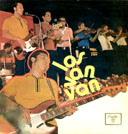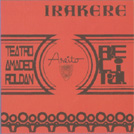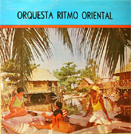Indice - Table of contents
New Stuff[hide]
Musicos: Juan Formell
Musicos: Yordamis Megret Planes
Musicos: Yasser Morejón Pino
Musicos: José Luis "Changuito" Quintana...
Musicos: Dennis Nicles Cobas
Fotos: Eli Silva
Grupos: Ritmo Oriental : 1988 - Vol. IX - 30 a...
Musicos: Rafael Paseiro Monzón
Musicos: Jiovanni Cofiño Sánchez
Fotos: Tom Ehrlich : 2024 Monterey Jazz, P...
Resenas: Vacilón Santiaguero (Circle 9 ...
Staff: Bill Tilford
Fotos: Tom Ehrlich : 2024 Monterey Jazz, P...
Fotos: Tom Ehrlich : 2024 Monterey Jazz Fe...
Photos of the Day [hide]
Roots of Timba II - Los Van Van, Ritmo Oriental & Irakere 1969-77


 ff
ff
based on the teachings of Tomás Cruz and Orlando Fiol
special contributors to this section: Rob Holland, Brett Gollin, Neris Glezbello, Michael Spiro, Victor Barrientos, Osvaldo Martínez, Will Schultz, Rich Pagano, Luis Carranza, Steve Cervantes, Emiliano Echeverría, Curtis Lanoue, David Peñalosa, Martin Karakas, Abel Robaina
As the innovations of Arsenio Rodríguez began to make their way into common practice in the 1950s, Cuban music reached its all-time peak of international popularity. The whole world was dancing mambo, "rhumba", and chachachá, genres that also figured prominently in record sales, radio airplay, film music, and even network television, with the most popular US sit-com featuring a Cuban bandleader in New York City who would frequently sing Babalú while hamming it up with a strap-on conga.
Within Cuba, this "golden age" of the 50s produced hundreds of brilliant, timeless recordings by such legendary artists as Orquesta Aragón (source), Beny Moré (source), Celia Cruz (source), and the two groups that inherited the bulk of Arsenio's musicians, Conjunto Chappottín (source) and Conjunto Modelo (source). Nevertheless, upon transcribing and analyzing the rhythm section practices and bass tumbaos of the 50s, we find very little that we haven't already covered in our survey of Arsenio Rodríguez. Some listeners, in fact, may find themselves missing the "living on the cutting edge" excitement of Arsenio's aggressive bloques and creative arranging ideas.
International focus on Cuban music went from its zenith to its nadir almost overnight with the revolution of 1959. The first decade of communist rule and political isolation created a cultural membrane that allowed much more music to pass into Cuba than it allowed to escape. In the 1960s, the global Latin music market lost touch with Havana and turned instead to New York and the cultural phenomenon that came to be called salsa.
Operating in a near vacuum, Cuban musicians forged onwards in the early 60s, producing some striking new rhythms, most notably Pello el Afrokán's mozambique (source), which would have a heavy influence on songo, and Pacho Alonso and Enrique Bonne's pilón (source), which would later influence timba conga-drumming, but for our immediate purposes, neither of these genres produced new developments in bass tumbaos or striking new compositional and arranging ideas.
Beny, Celia, Pello, and Pacho notwithstanding, it would be twenty years before Havana experienced another period of innovation and experimentation comparable to the one Arsenio spearheaded in the late 40s.
Meanwhile, the music of North America and Europe was undergoing an historic transformation that equaled Havana's late-40s Arsenio-driven explosion in intensity and far surpassed it in breadth. Every non-Latin genre was peaking simultaneously, as evidenced in pop and rock by The Beatles and Bob Dylan, in soul by the artists and rhythm sections of Motown, Stax and James Brown, and in jazz by the likes of Miles Davis and John Coltrane. These extraordinary external influences were brought to bear on Havana's most brilliant musical minds precisely as internal political and cultural forces were working to suppress and discourage pre-revolution musical styles and when key pre-revolution icons such as Celia Cruz and José Fajardo had left the island. The result was that the Cuban music of the late 60s and 70s probably reflects a greater non-Cuban influence than any period since the days of contradanza and danzón.
The three most innovative Cuban dance bands of the 70s - Los Van Van, Ritmo Oriental, and Irakere - found very different ways of assimilating the new influences into the existing Cuban musical vocabulary, but in the end, each of them proved, once again, the old adage: If you mix something Cuban with something not Cuban, you get ... something else Cuban. (Warning: the author has a habit of inventing old adages).
It's brutally hard to pin down chronological, biographical and anecdotal information about this mysterious period, but all three bands appear to have simultaneously hit their stride around 1972, catapaulting Cuban music into one of its most explosively creative periods.
The key players had already been in place for some time. Chucho Valdés, with the nucleus of musicians who would become Irakere, produced jazz recordings throughout the 60s, experimenting most notably with the idea of mixing jazz with Afrocuban rhythms. Ritmo Oriental had been playing traditional charanga since 1958, when they split off from Elio Revé, who continued playing his changüí-flavored charanga hybrid and was gradually hiring most of the musicians who would later become Los Van Van, most notably a young bassist who, at least from my timbacentric point of view, is rivaled only by Arsenio Rodríguez for the distinction of being the most important figure in the history of Cuban music.
His name was Juan Formell Cortina.





















